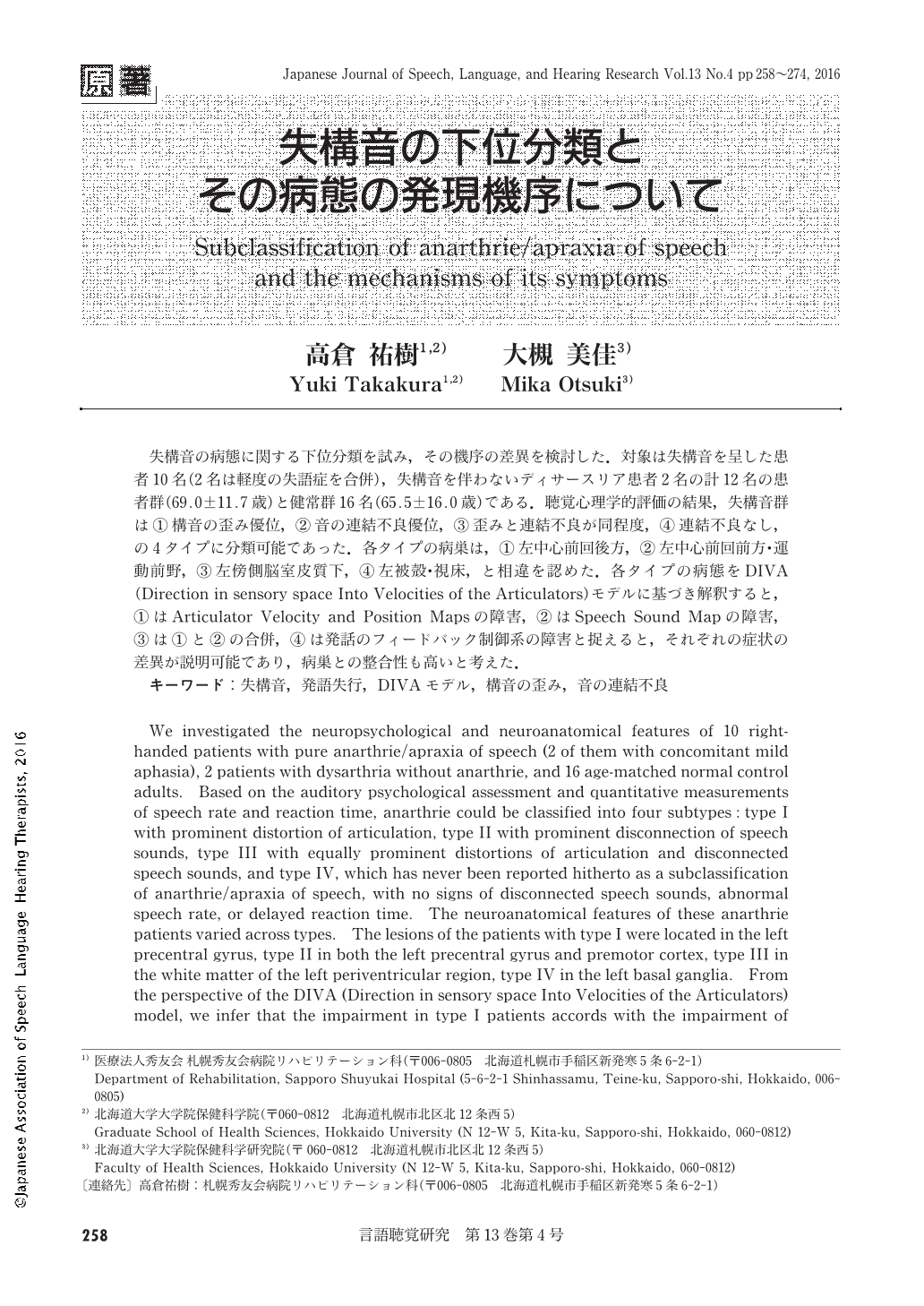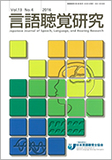Japanese
English
- 有料閲覧
- Abstract 文献概要
- 1ページ目 Look Inside
- 参考文献 Reference
- サイト内被引用 Cited by
失構音の病態に関する下位分類を試み,その機序の差異を検討した.対象は失構音を呈した患者10名(2名は軽度の失語症を合併),失構音を伴わないディサースリア患者2名の計12名の患者群(69.0±11.7歳)と健常群16名(65.5±16.0歳)である.聴覚心理学的評価の結果,失構音群は①構音の歪み優位,②音の連結不良優位,③歪みと連結不良が同程度,④連結不良なし,の4タイプに分類可能であった.各タイプの病巣は,①左中心前回後方,②左中心前回前方・運動前野,③左傍側脳室皮質下,④左被殻・視床,と相違を認めた.各タイプの病態をDIVA(Direction in sensory space Into Velocities of the Articulators)モデルに基づき解釈すると,①はArticulator Velocity and Position Mapsの障害,②はSpeech Sound Mapの障害,③は①と②の合併,④は発話のフィードバック制御系の障害と捉えると,それぞれの症状の差異が説明可能であり,病巣との整合性も高いと考えた.
We investigated the neuropsychological and neuroanatomical features of 10 right-handed patients with pure anarthrie/apraxia of speech (2 of them with concomitant mild aphasia), 2 patients with dysarthria without anarthrie, and 16 age-matched normal control adults. Based on the auditory psychological assessment and quantitative measurements of speech rate and reaction time, anarthrie could be classified into four subtypes:type I with prominent distortion of articulation, type II with prominent disconnection of speech sounds, type III with equally prominent distortions of articulation and disconnected speech sounds, and type IV, which has never been reported hitherto as a subclassification of anarthrie/apraxia of speech, with no signs of disconnected speech sounds, abnormal speech rate, or delayed reaction time. The neuroanatomical features of these anarthrie patients varied across types. The lesions of the patients with type I were located in the left precentral gyrus, type II in both the left precentral gyrus and premotor cortex, type III in the white matter of the left periventricular region, type IV in the left basal ganglia. From the perspective of the DIVA (Direction in sensory space Into Velocities of the Articulators) model, we infer that the impairment in type I patients accords with the impairment of Articulator Velocity and Position Maps, the impairment in type II patients accords with that of the Speech Sound Maps, the impairment in type III patients could be presumed to be a complication of that in types I and II, while the type IV patients could have impairment of the feedback control system.

Copyright © 2016, Japanese Association of Speech-Language-Hearing Therapists. All rights reserved.


